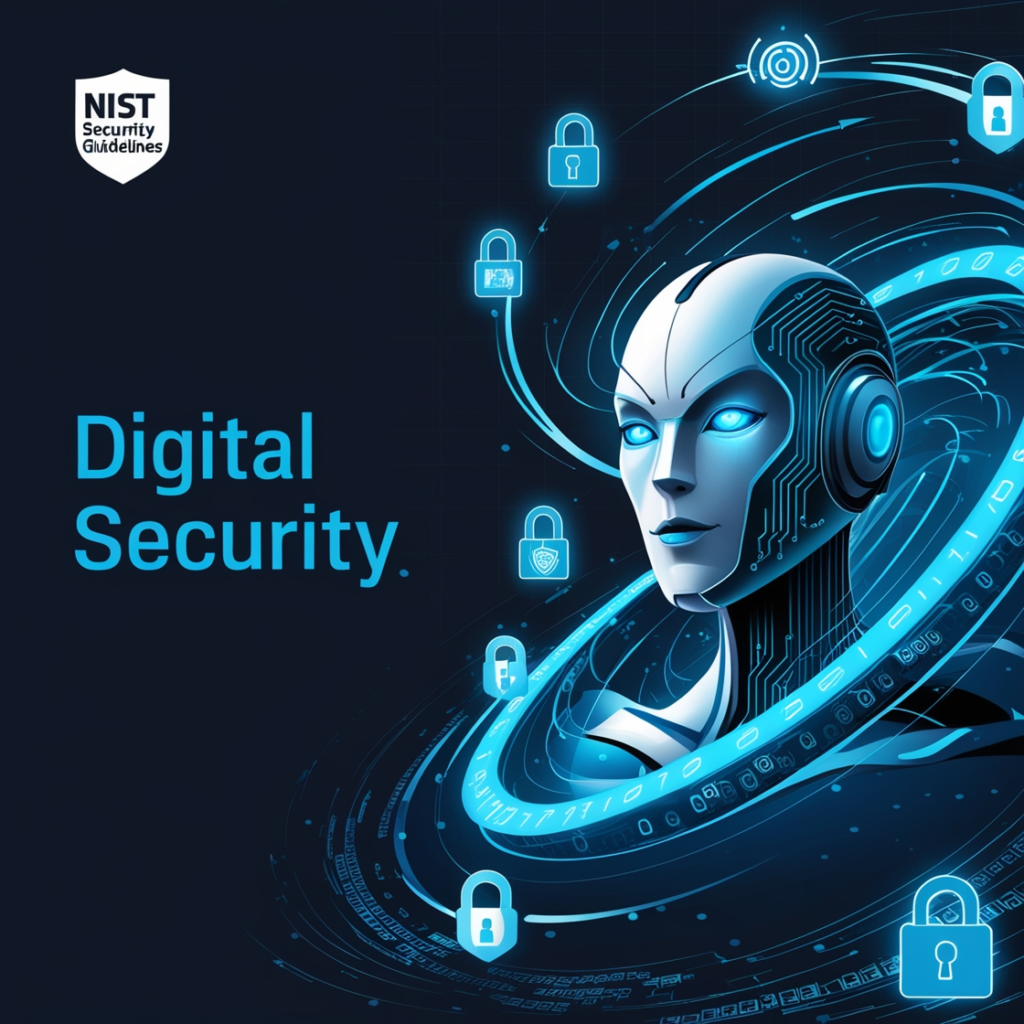Discover NIST security guidelines for digital security including the Cybersecurity Framework and Special Publication 800 series. Learn how to bolster your organization’s cybersecurity with effective risk management and compliance strategies.

Understanding NIST Security Guidelines
In today’s digital age, securing sensitive data and maintaining robust cybersecurity protocols are more critical than ever. The National Institute of Standards and Technology (NIST) leads in developing detailed security standards. These standards help organizations protect their digital resources. This blog specifically focuses on NIST security guidelines as well as their significance. The components of the guidelines and their practical application in increasing system security. More information https://www.nist.gov/cybersecurity.
The Role of NIST Security
The National Institute of Standards and Technology (NIST) is a non- regulatory agency in the United States Department of Commerce that aims at promoting measurements standards. NIST is well known for establishing standard and guidelines to improve information system and technology security. The major publications include the NIST Cybersecurity Framework (CSF) and NIST Special Publication 800- series that assist in categorizing and addressing cybersecurity risks.
NIST Cybersecurity Framework (CSF)
The NIST Cybersecurity Framework (CSF) is a set of guidelines developed to address cybersecurity risks in within the context of an organization’s operations. Every function reflects an aspect of the cybersecurity life cycle and assists organizations in setting up defense measures. The CSF is built around five core functions:
The five basic steps used in the context of Information security are as follows: Identify, Protect, Detect, Respond and Recover.
1.Identify: This function requires integrating the knowledge of the organization’s environment to address cybersecurity threats. This is the management of the assets, risks and governance of an organization.
2.Protect: This phase concentrates on putting measures that would protect activities that makes up the critical infrastructure services. Access control is also under it as well as Data security and protective technologies.
3.Detect: The purpose is to indicate the cybersecurity incident as early as possible. This includes activities such as scanning and identifying risks.
4.Respond: If an organization faces a threat, it needs a way to counter it. This involves identifying necessary actions, communicating effectively, and evaluating incidents.
5.Recover: Recovery differs from reporting in that it focuses on returning to normal operations and identifying losses. It consists in the recovery planning, improvements, and communications.
More information here: https://en.wikipedia.org/wiki/NIST_Cybersecurity_Framework
NIST Special Publication 800 Series
The organization of the United States NIST has specific recommendations and advice regarding numerous aspects of cybersecurity in its Special Publication (SP) 800 series. Some notable publications include:
- NIST SP 800-53: Its functions are to present a range of security and privacy controls for ISs and organizations of the federal government of the USA. It is important for ascertaining that systems contain adequate security as required.
- NIST SP 800-171: Provides the guidelines on Protecting CUI in non-federal systems and organizations. It is imperative for contractors and other entities handling sensitive information to follow strict security protocols.
- NIST SP 800-37: deals with the RMF for federal information systems. CISRM offers a systematic solution of managing risk as it incorporates the aspect of security and risk management in the system development life cycle.
- NIST SP 800-63: This guideline addresses aspects of digital identity, including authentication and identity proofing. These are key components for securing user access. https://pages.nist.gov/800-63-3/
Implementing NIST Guidelines
Implementing NIST’s security guidelines involves several steps:
Assessment and Planning:
It is important to carry out an evaluation of the organizations’ security status and deficiencies. Make a detailed program that corresponds to the NIST guidelines and reflects your organization’s requirements.
Develop Policies and Procedures:
Develop specific security policies with respect to NIST framework for implementation in the organization. This entails determining what people in the organization can do and cannot, what apart from access they can do, and what happens in case of a security breach.
Training and Awareness:
Make sure the employees understand what is required to prevent cyber-attacks and the importance of following NIST standards. This area is critical for network defense. Regular training helps reduce human errors and improves overall security.
Technology and Tools:
Ensure that you apply the right and appropriate technologies and tools for your cybersecurity. This is through putting in place firewalls, having IDS, and optimizing the use of encryption solutions.
Continuous Monitoring and Improvement:
Cyberspace threats are dynamic. It’s important to monitor the environment and stay updated on new threat innovations. Remember that change is continuously happening and that old techniques will have to be updated periodically to combat new threats.
Benefits of NIST Security Guidelines
Adhering to NIST security guidelines offers several benefits:
- Enhanced Security: In this context, most of the organizations can follow the standards to enhance protection of their systems against cyber threats.
- Regulatory Compliance: These guidelines help organizations adjust their IT systems to comply with legal frameworks. This compliance helps avoid legal consequences.
- Risk Management: The guidance offered by NIST which is a step-by-step process aids in risk management and its possible prevention.
- Improved Resilience: The business continuity plan integrates security measures to limit the impact of an incident.
Conclusion
NIST security frameworks act as fundamental guidelines in the formulation of efficient security measures in the context of cyberspace. By following the National Institute of Standards and Technology Cybersecurity Framework and applying the principles from the special publication 800 series, an organization can effectively build a strong security posture. This approach helps address risks efficiently and effectively, securing resources more effectively. More and more threats arise in the digital world. This guide will therefore be essential for those who want to stay informed and follow best practices. https://timevision.in/tech/cybersecurity-threats-and-countermeasures-protecting-your-digital-assets/.

Future trends in IoT Technology
In the blog, we present the future focus of IoT technology as 5G, edge computing, AI and ML, better security, and more.. It describes the approach towards solving interconnect, the idea of green architectures, utilization of the blockchain, and development of IoT on health solutions and smart, all the aspects of evolution of multiple domains.…

How Machine Learning Technology Evolved
The blog explores the genesis of the topic (Machine Learning ) that was developed along with other concepts such as that of a universal machine initially pioneered by Turing and McCarthy. It includes topics such as early algorithms like the Perceptron, the transition to statistical methods, new developments of deep learning, and different aspects influencing…

Focus on Specific Aspects of the Recession :
The current recession in India continues both domestic and global employment, consumer expenditure, SME business, and investment suffering. Higher inflation poses more problems to the economy and while the action taken by the government has merits they tend to lack the ability and capacity to solve deep structural problems. As we move through this downturn,…




Leave a Reply
You must be logged in to post a comment.